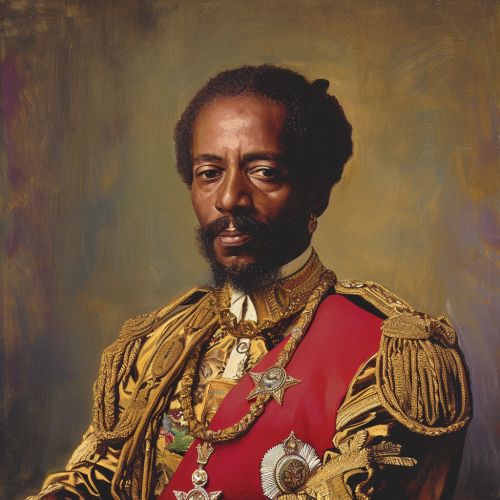Solomonic dynasty
Origins
The Solomonic Dynasty traces its roots back to the biblical King Solomon and the Queen of Sheba. According to Ethiopian historical tradition, the dynasty was founded by Menelik I, the son of King Solomon and the Queen of Sheba, who had visited Solomon in Jerusalem. The dynasty's claim to Solomonic descent is traditionally symbolized by the Lion of Judah, which appears in the royal standard, and is often depicted with the Ethiopian emperors.


Early History
The Solomonic dynasty ruled Ethiopia for many centuries, from the 13th century until the overthrow of Emperor Haile Selassie in 1974. The dynasty's early history is shrouded in legend. According to the Kebra Nagast, a 14th-century account, the dynasty began when Menelik I returned to Ethiopia with the Ark of the Covenant. The Ark was then placed in the Church of St. Mary of Zion in Axum, where it is said to remain to this day.
Medieval Period
During the medieval period, the Solomonic dynasty oversaw a golden age in Ethiopian history. The period was marked by the construction of rock-hewn churches, such as those at Lalibela, and the development of Ge'ez literature and Orthodox Christian culture. The dynasty also maintained its independence in the face of encroaching Muslim states, notably during the reign of Amda Seyon I, who expanded Ethiopian territory and strengthened central authority.
Early Modern Period
The early modern period was a time of upheaval for the Solomonic dynasty. The dynasty was overthrown by the Adal Sultanate and the Oromo migrations in the 16th century, but was restored by Emperor Susenyos I in the early 17th century. The dynasty faced further challenges from internal rebellion and foreign invasion, but managed to maintain its rule over a unified Ethiopian state.
Modern Period
The modern period of the Solomonic dynasty began with the reign of Emperor Menelik II, who modernized Ethiopia and expanded its territory into the southern and western regions. The dynasty reached its zenith under Emperor Haile Selassie, who introduced a constitution, abolished slavery, and sought to modernize the country further. However, his reign ended with the Ethiopian Revolution in 1974, which marked the end of the Solomonic dynasty.
Legacy
The legacy of the Solomonic dynasty is profound. It has shaped Ethiopian culture, religion, and identity. The dynasty's claim to Solomonic descent has been a source of legitimacy and a symbol of continuity for over seven centuries. Despite its end, the dynasty continues to be revered and its symbols and traditions continue to be part of Ethiopian culture.


